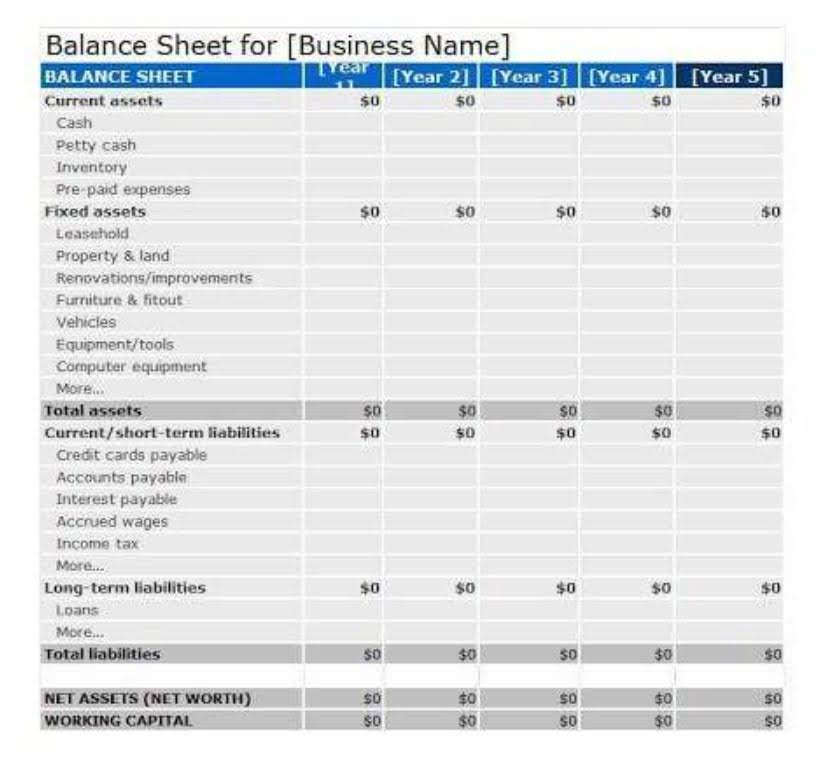
Short-term investments are temporary investments that do not qualify as cash equivalents but are expected to turn to cash within one year. A drawback of the account form is the difficulty in presenting an additional column of amounts on an 8.5″ by 11″ page. For the past 52 years, Harold Averkamp (CPA, MBA) has worked as an accounting supervisor, manager, consultant, university instructor, and innovator in teaching accounting online. Lawsuits, especially with huge companies, can be an enormous liability and significantly impact the bottom line. Companies that underestimate the impact of legal fees or fines will be non-compliant with GAAP. To make informed decisions, track your liabilities carefully, manage them effectively, and align them with your business goals.
- The interest expense account is a plug figure—we add $2,000 +$50 to get $2,050.
- Managing this well helps your clients avoid missed payments, late fees, and cash shortages.
- At that point, the depreciation of the constructed asset will begin.
- Your accounting software should automatically add up all your liabilities for you.
- This will help you spot high-interest debt quickly and better plan repayments, improving cash flow.
- Equity is a residual claim—a claim to the assets remaining after the debts to creditors have been discharged.
Issuing additional common stock or additional bonds
Examples of current liabilities may include accounts payable and customer deposits. Contingent liabilities are not formally recorded in the accounts system, but appear as footnotes to me balance sheet. When there is a transaction that creates obligation for the company to make future payments, a liability arises and is recognised as when goods are bought on credit. However, current liabilities often are not represented by a direct transaction. This is the reason that some unrecorded liabilities are recorded at the end of accounting period through adjusting entries such as salaries, wages and interest payable. An accrued liability is a financial obligation that a company incurs during a given accounting period for goods and services already delivered.
Long-Term Debt
A low ratio means better financial health and a higher chance of getting loans approved. Keeping this number low improves creditworthiness and boosts financial stability over time. They are listed on the right side and grouped into current and non-current categories. For example, AT&T’s 2020 report showed that bank debt is due within one year as a current liability. These can be loans, bills, or future payments for goods and services.
Assets, Liabilities, Equity, Revenue, and Expenses
Although the recognition and reporting of the liabilities comply with different accounting standards, the main principles are close to the IFRS. Liabilities can help contra asset account companies organize successful business operations and accelerate value creation. However, poor management of liabilities may result in significant negative consequences, such as a decline in financial performance or, in a worst-case scenario, bankruptcy. Under IFRS, liabilities are defined as present obligations arising from past events, the settlement of which is expected to result in an outflow of resources. IFRS emphasizes a principles-based approach, allowing for greater flexibility in the interpretation and application of standards.
- Keep your financial obligations in check to protect your stability.
- If the revenues come from a secondary activity, they are considered to be nonoperating revenues.
- Lenders will scrutinize your existing liabilities to assess your creditworthiness, and a balanced debt-to-equity ratio shows financial stability.
- On the other hand, long-term liabilities, or non-current liabilities, extend beyond a year.
- The accounting method under which revenues are recognized on the income statement when they are earned (rather than when the cash is received).
- For example, AT&T’s 2020 report showed that bank debt is due within one year as a current liability.
What Are Liabilities: Definition, Types, And Examples
Contingent assets are not recognised, accounting for liabilities but they are disclosed when it is more likely than not that an inflow of benefits will occur. However, when the inflow of benefits is virtually certain an asset is recognised in the statement of financial position, because that asset is no longer considered to be contingent. A contingent liability is not recognised in the statement of financial position. However, unless the possibility of an outflow of economic resources is remote, a contingent liability is disclosed in the notes. IAS 37 defines and specifies the accounting for and disclosure of provisions, contingent liabilities, and contingent assets.
Assets are probable future economic benefits owned or controlled by the enterprise. Liabilities and equity are mutually exclusive claims to or interest in the enterprise’s assets by entities other than the enterprise. (3) They permit management to vary continually the total funds from short term sources. Current liabilities tend to be fairly permanent in the aggregate, but they differ from long term liabilities in several ways. If liabilities are not valued at cost, they can be valued at the fair market value of goods or services to be delivered. For example, an automobile dealer who sells a car with a one year warranty must provide parts and services during the year.
Types of Liabilities

A formal written promise to pay interest every six months and the principal amount at maturity. A sole proprietorship is a simple form of business where there is one owner. However, for accounting purposes the economic entity assumption results in the sole proprietorship’s business transactions being accounted for separately from the owner’s personal transactions. The net of the asset and its related contra asset account is referred to as the asset’s book value or carrying value. When inventory items are acquired or produced at varying costs, the company will need to make an assumption on how to flow the changing costs. If a corporation is highly leveraged, a lender may not be interested in making new or additional loans to the corporation.
Sample Balance Sheets

In most cases, liabilities are measured, recorded and reported at their principal amounts. Although they aren’t distributed until January, there is still one full week of expenses for December. The salaries, benefits, and taxes incurred from Dec. 25 https://www.hestiastoves.com/what-is-bookkeeping-a-guide-for-business-owners/ to Dec. 31 are deemed accrued liabilities. Meanwhile, various liabilities will be credited to report the increase in obligations at the end of the year.

- Only include the amount owing for the accounting cycle you’re reviewing — the past financial year, quarter, or month.
- And if you’re considering additional financing, you’ll need to know how new debt will affect your current liability structure.
- It also tells us whether a company can survive in the future or would it go bankrupt.
- For example, if a company faces a lawsuit and new evidence emerges that increases the likelihood of a loss, the liability must be adjusted accordingly.
- Short-term notes payable might include a promissory note for a loan from a bank with a repayment period of less than one year.
Debt itself is unavoidable, especially if you’re in a growth phase—but you want to ensure that it stays manageable. The important thing here is that if your numbers are all up to date, all of your liabilities should be listed neatly under your balance sheet’s “liabilities” section. Bench simplifies your small business accounting by combining intuitive software that automates the busywork with real, professional human support. In short, there is a diversity of treatment for the debit side of liability accounting. Liabilities, when handled with care, are like the secret sauce to organizing a thriving business and accelerating value creation.
Short-term notes payable might include a promissory note for a loan from a bank with a repayment period of less than one year. Long-term notes payable generally involve a more extended loan or financing arrangement. These are recorded as liabilities on your balance sheet and can be useful for larger, planned expenses like equipment purchases or business expansion.
